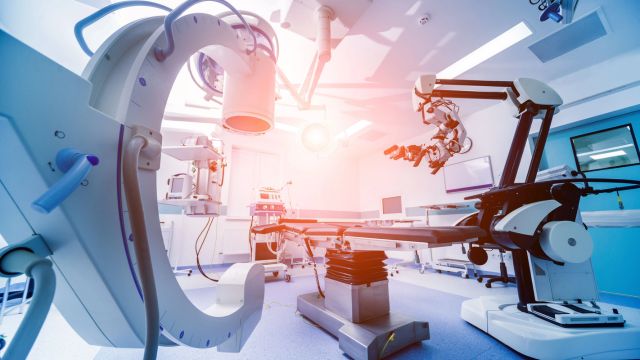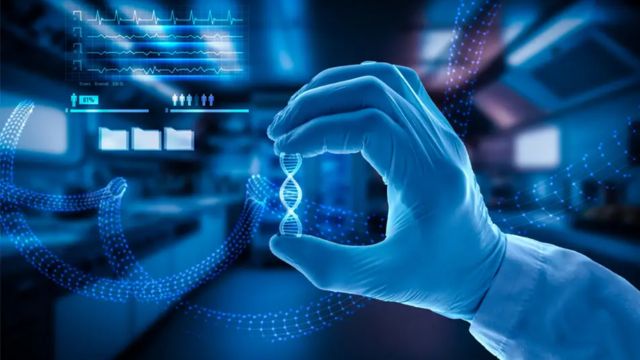Although many sectors are now being reshaped by the fast development of nanotechnology, nowhere is its influence more significant than in the production of medical devices. By allowing the development of highly specialized medical devices and treatments that are more effective, less invasive, and customized to the individual needs of patients, nanotechnology—the science of atomic and molecular scale matter manipulation—is poised to transform precision medicine. Usually between 1 and 100 nanometres This paper investigates why precision medicine is the future of medicine and how nanotechnology is revolutionising the production of medical instruments.
What is Nanotechnology in Medical Devices?
In the context of medical device manufacture, nanotechnology is the development of devices including nanoparticles, nanomaterials, and nanoscale structures to increase functionality, performance, and therapeutic effects. These nanomaterials find application in drug delivery systems, diagnostic instruments, and implants among other areas. Working at such a small scale enables manufacturers to produce very specialised medical tools with hitherto unheard-of accuracy and efficiency.
Key Applications of Nanotechnology in Medical Device Manufacturing

- Drug Delivery Systems:
Drug delivery systems represent among the most exciting uses for nanotechnology in medical equipment. Targeted action and bioavailability of conventional drug delivery systems sometimes provide difficulties. By allowing the design of tools capable of controlled, targeted release of drugs, nanotechnology solves these problems. By means of direct delivery of drugs to a designated site in the body, nanoparticles can be designed to lower side effects and improve the efficacy of treatments. In the treatment of autoimmune diseases, cancer, and chronic conditions especially, this is quite helpful. - Medical Imaging:
Nanotechnology is also improving the discipline of medical imaging. Clearer, more accurate images obtained by doctors using nanoparticles that can bond to particular cells or tissues will help to enable earlier diagnosis and more individualised treatment plans. In MRI, CT scans, and other imaging modalities, nanoparticles are used in contrast agents to produce better resolution images and enable more precisely visualising of particular areas of concern. - Biosensors and Diagnostics:
The integration of nanotechnology into biosensors has revolutionized diagnostics. Medical devices that utilize nanosensors are capable of detecting diseases at a much earlier stage than traditional methods, often before symptoms appear. These devices can monitor biological markers with extreme precision and can be used to detect infections, cancer cells, or genetic abnormalities in real-time. For instance, nanosensors can detect glucose levels, allowing diabetic patients to monitor their condition more accurately. - Implants and Prosthetics:
Nanotechnology is playing a crucial role in the development of advanced implants and prosthetics. Through the use of nanomaterials, manufacturers can produce implants that are more durable, biocompatible, and able to better integrate with human tissues. For example, nanostructured coatings on implants can reduce the risk of infection, promote better healing, and ensure the longevity of medical devices such as joint replacements or dental implants. These innovations are particularly important in the context of precision medicine, as they allow for more customized, patient-specific solutions. - Antimicrobial Properties:
Nanotechnology is also enabling the development of antimicrobial medical devices. By incorporating nanoparticles with antimicrobial properties into medical devices like catheters, surgical tools, and wound dressings, manufacturers can significantly reduce the risk of infections. This is especially important in hospitals where the risk of healthcare-associated infections is high.
Challenges in Implementing Nanotechnology in Medical Manufacturing
Despite the tremendous potential of nanotechnology in medical device manufacturing, several challenges remain:
- Regulatory Hurdles:
The regulatory framework surrounding nanotechnology in medical devices is still evolving. Regulatory bodies like the FDA (Food and Drug Administration) and EMA (European Medicines Agency) are working to establish guidelines for the approval of nanotechnology-based medical devices. This presents a challenge for manufacturers, as they need to ensure their products meet safety and efficacy standards while navigating a complex regulatory environment. - Cost and Scalability:
Although nanotechnology has the potential to revolutionize medical device manufacturing, the cost of producing nanoscale materials and devices can be prohibitively high. Scaling up production for commercial use requires significant investment in research, development, and manufacturing infrastructure. Overcoming these financial and logistical barriers is essential for making nanotechnology-based devices more accessible to a broader range of patients. - Safety Concerns:
There are ongoing concerns regarding the safety of nanomaterials, particularly when it comes to their long-term effects on human health. Extensive research is needed to fully understand the risks associated with the use of nanomaterials in medical devices. Manufacturers must ensure that these materials are safe for use in the human body and do not cause unintended side effects.
The Future of Nanotechnology in Medical Device Manufacturing
The future of nanotechnology in medical device manufacturing is incredibly promising. As research progresses and manufacturing techniques improve, we can expect to see more innovative devices that offer better precision, faster healing, and fewer complications for patients. Nanotechnology will likely be at the heart of personalized medicine, enabling the creation of devices that are specifically tailored to individual patient needs. With its ability to enhance drug delivery, improve diagnostic accuracy, and create more effective implants and prosthetics, nanotechnology is set to play a pivotal role in the future of healthcare.
Conclusion
Nanotechnology is undeniably shaping the future of medical device manufacturing and precision medicine. From drug delivery systems to advanced implants, the potential applications are vast and varied. While challenges exist, the continued advancements in nanotechnology will undoubtedly lead to more effective and personalized medical treatments. As manufacturers embrace these technologies, patients can look forward to safer, more efficient, and highly specialized medical devices that offer a new era of healthcare solutions.
At J & J Supplies, we are committed to keeping you informed about the latest advancements in medical supplies, clinical engineering, and more. Stay updated with the latest industry news, innovations, and insights on how these technologies are shaping the future of healthcare. Join our community for regular updates and expert advice tailored to your needs!
FAQs
What is the role of nanotechnology in medical device manufacturing?
Nanotechnology in medical device manufacturing involves using nanoscale materials to create devices that are more precise, effective, and safer for patients. It enables innovations in drug delivery, medical imaging, biosensors, implants, and antimicrobial devices.
How does nanotechnology improve medical diagnostics?
Nanotechnology enhances medical diagnostics by enabling the development of nanosensors that can detect diseases at earlier stages with higher precision, leading to better-targeted treatments.
Are there any safety concerns with using nanotechnology in medical devices?
Yes, there are ongoing research efforts to understand the long-term effects of nanomaterials on human health. Ensuring that these materials are safe for use in medical devices is a critical concern for manufacturers and regulatory bodies.
What are the benefits of nanotechnology in medical implants?
Nanotechnology helps improve the durability, biocompatibility, and integration of medical implants with human tissues, leading to better healing, reduced infection risk, and longer-lasting devices.
How does nanotechnology impact drug delivery systems?
Nanotechnology allows for more controlled and targeted drug delivery, improving the effectiveness of treatments while reducing side effects. This is particularly beneficial in treating chronic conditions and cancer.








